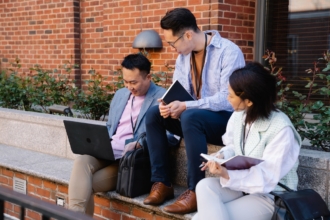Top 11 benefits of workflow automation
- Save time
- Save money
- Increase productivity
- Reduce errors
- Streamline approvals
- Increase transparency
- Promote accountability
- Improve the customer experience and vendor relationships
- Manage multiple tasks easily
- Increase employee engagement
- Increase organizational efficiency
If manual processes are slowing you down, causing errors, and eating into your profits, you need workflow automation. With workflow automation, you automate specific tasks and processes in your business to overcome some of the problems inherent in manual work.
The good news is that a surprising number of workflows are ripe for automation. That’s according to research by enterprise technology provider WorkMarket, which found that 74 percent of respondents think automation could handle at least some of their daily tasks.
Workflow automation comes with a whole heap of benefits too. Below, we outline five of the most important.
1. Save time
How much of your employees’ time is consumed by repetitive work that could be automated? Chances are it’s a lot. For example, according to Gartner, accounting teams spend up to 30 percent of their time on manual accounting rework. For a company with 40 full-time accountants, automating those tasks would save 25,000 hours of staff time.
When you implement workflow automation, employees don’t have to do monotonous, time-intensive tasks. Instead, you free up their time so they can help your business grow.
Pro Tip
Automate manual processes, data collection, approvals, and more with Jotform. Sign up for free!
2. Save money
Automation doesn’t just save your company time; it can save you money. This happens in several ways.
The first is a direct result of saving time, which leaves your team free to focus on revenue-generating activities. Second, by adopting new workflow automation software, companies can reduce their reliance on the expensive and outdated legacy solutions employees need to complete manual work. Third, fewer errors combined with an increase in compliance means organizations spend less money fixing mistakes and dealing with regulatory issues.
3. Increase productivity
This benefit is pretty straightforward, and we’ve touched on it already. When your team doesn’t have to waste time on repetitive tasks, they have more time to focus on work that matters and are more productive as a result.
With repetitive busywork removed, employees are also less likely to experience the brain drain that can occur when completing mind-numbing tasks. This can leave them more motivated to work harder on important tasks.

4. Reduce errors
Manual processes aren’t just time-intensive — they’re also often prone to errors.
These errors can occur in any number of ways. Handwritten forms can be hard to read, and team members can enter information from digital forms improperly or make incorrect manual calculations. Worse still, the more repetitive the task, the more likely it is that employees will lose focus and make a mistake.
By applying workflow automation solutions to automate data entry and approval workflows, you can all but eliminate human error. For example, there’s no need to manually input data into multiple systems because once the data is recorded, it can be automatically shared between spreadsheets and databases.
5. Streamline approvals
Manual approval processes are an enormous time suck. They can slow down workflows and lead to errors and missed deadlines. Often, employees spend more time sending and chasing documents than they do signing off on work and tackling tasks.
Digitize and automate the approval process, and all of these problems disappear. With automatic routing, sign-offs are sent to the correct approver based on conditional logic as soon as someone completes a step in the process. Approvers get automatic notifications to remind them that documents are waiting for their attention.
6. Increase transparency
Processes of all kinds involve different people at different points, but when tasks are completed manually, they tend to become disjointed from one another. No one has a good overview of the process as a result, making it a challenge to understand, analyze, and improve.
Using workflow automation makes your processes more transparent. It allows everyone to see what happens before and after they get involved, giving people a greater sense of control over their work. Automation tools also provide valuable data about your processes and task completion, so you can easily see where delays tend to occur, for example, and make improvements.
7. Promote accountability
Manual processes tend to go undocumented, with managers expecting employees to implicitly understand their roles and prioritize work appropriately. But the lack of transparency and guidance isn’t ideal if you want to develop a high-performing team.
Workflow automation tools allow you to create tasks, assign them to employees, and indicate work priorities. These tactics highlight individual contributions to larger projects and set clear expectations for team members, all of which contributes a culture of accountability.
8. Improve the customer experience and vendor relationships
As mentioned above, manual processes take more time and introduce errors, which may inadvertently delay vendor payments and contracts, drag down customer service scores, jeopardize sales opportunities, and more.
You might not think that continuing to perform tasks manually could have such an impact, but if your competitors are automating, they’re likely to get higher marks from outsiders for speed, accuracy, and responsiveness.
Workflow automation streamlines your interactions with external parties. For example, you could send automated confirmation emails after receiving customer orders. You could automate vendor contract generation and use e-signatures. You could automatically assign leads to members of your sales team after every landing page form submission and populate your lead database — the possibilities are endless.
9. Manage multiple tasks easily
No one has just one thing going on at work. We usually have more things than we can count, and trying to track it all manually — and keep everything moving along — is a challenge. In fact, you probably spend more time managing tasks than actually doing them!
Automation software removes the bulk of a manager’s low-level administrative tasks. There’s no need to send reminders, request updates, and decipher spreadsheets. You can easily get an overview of tasks and their statuses, see what your team is working on at any given time, and send automated reminders for work that’s coming due.
Workflow automation can also keep projects proceeding smoothly by automatically notifying team members when they have a job to do.
10. Increase employee engagement
Would you be alarmed to learn that nearly half your employees are bored at any given moment? And that 33 percent of employees cite boredom as their main reason for leaving a company? Repetitive, menial tasks are a major contributor to boredom in the workplace, so the more you can do to offload these tasks from workers’ plates, the better.
Automation can handle ho-hum administrative assignments so your employees don’t have to. Rather than spending time inputting data or sending emails, they can be solving customer problems, for example, or negotiating the details of vendor contracts.
Meaningful work keeps employees engaged, which makes them more motivated to do their best work and less likely to leave. That’s good for them — and for you.
11. Increase organizational efficiency
Implementing workflow automation isn’t just about automating discrete tasks, such as inputting form data into a CRM. That’s certainly helpful, but there’s also the bigger picture to consider: Eliminating manual tasks opens the door to greater efficiencies across the entire business.
Most workflow automation tools integrate with the other tools you use on a daily basis. Take the CRM example: Using a workflow automation solution, you can automatically input form data into a CRM. That solution might also integrate with Salesforce, which means the data can be automatically relayed to your sales pipeline at the same time.
These types of efficiencies are only possible with digital processes, and workflow automation tools are a good start.
Get started with workflow automation with Jotform
Jotform’s suite of software tools is the perfect way for any business, big or small, to get started with workflow automation.
Use Jotform’s wide range of form and PDF templates to automate the data-collection process for every department, from HR to sales. Collect and manage all of that data in one place using Jotform Tables. Automate approval processes using Jotform’s approval templates that route sign-offs and remind users without you having to lift a finger. Get started for free today.















































































Send Comment: